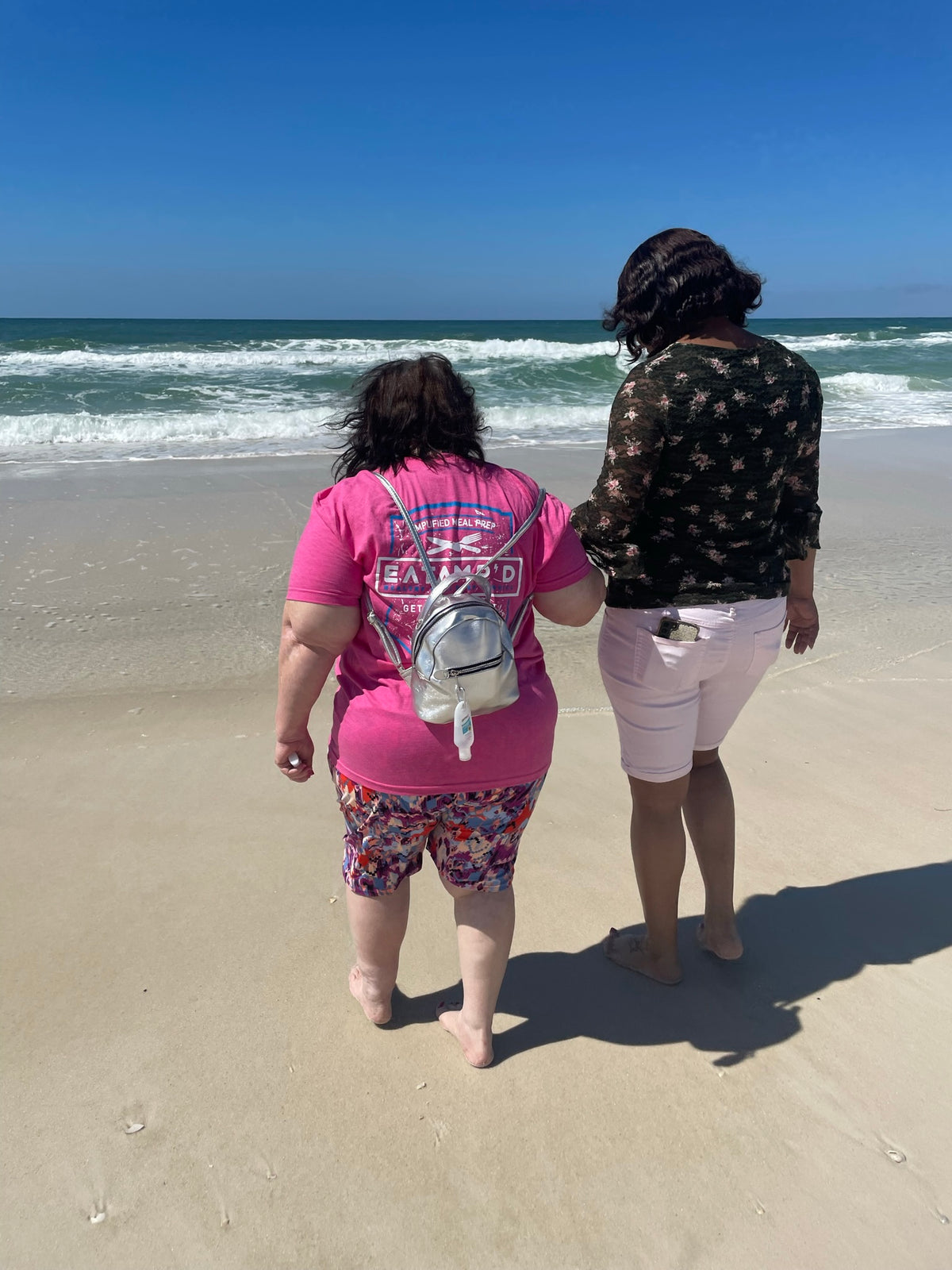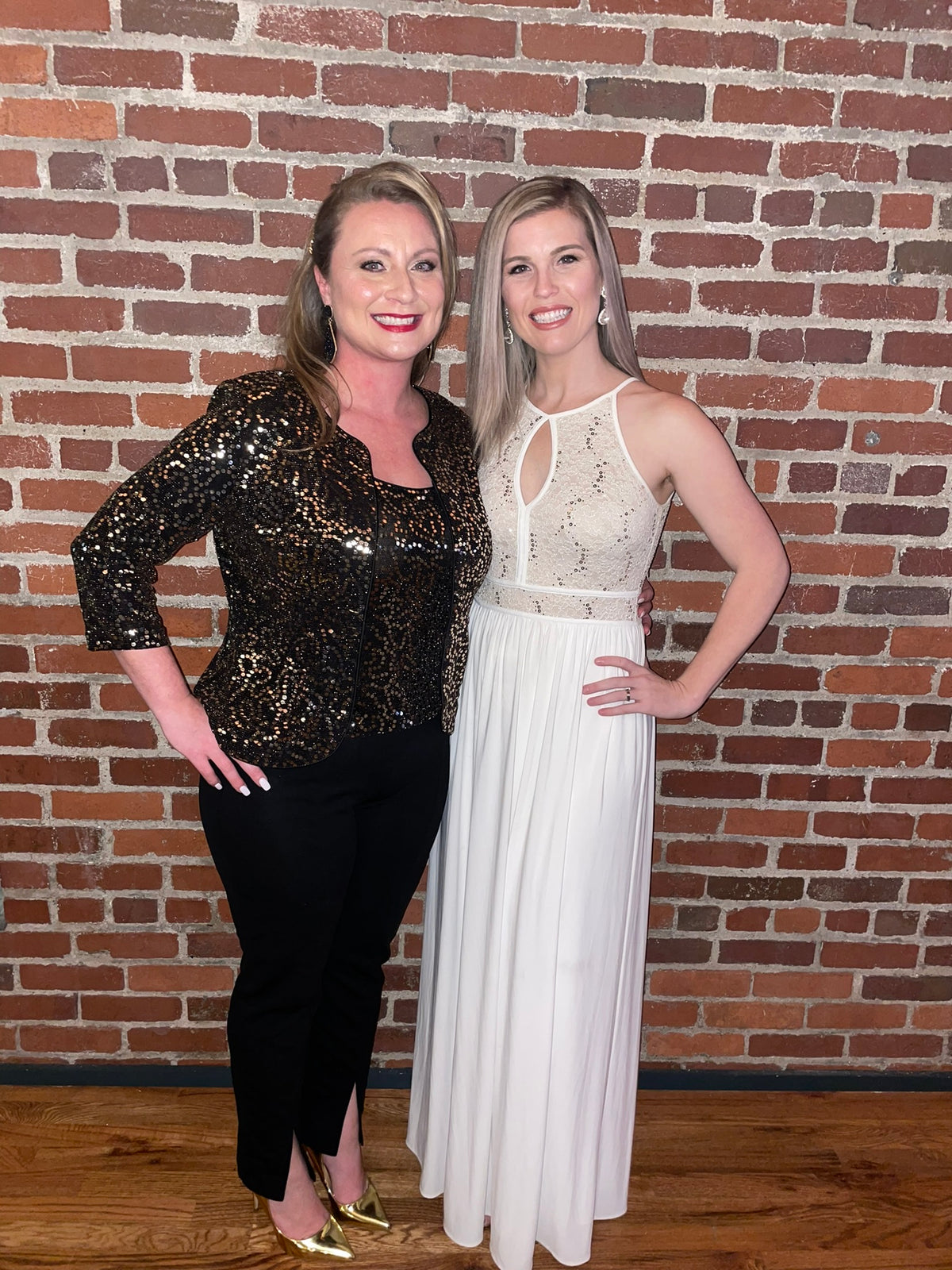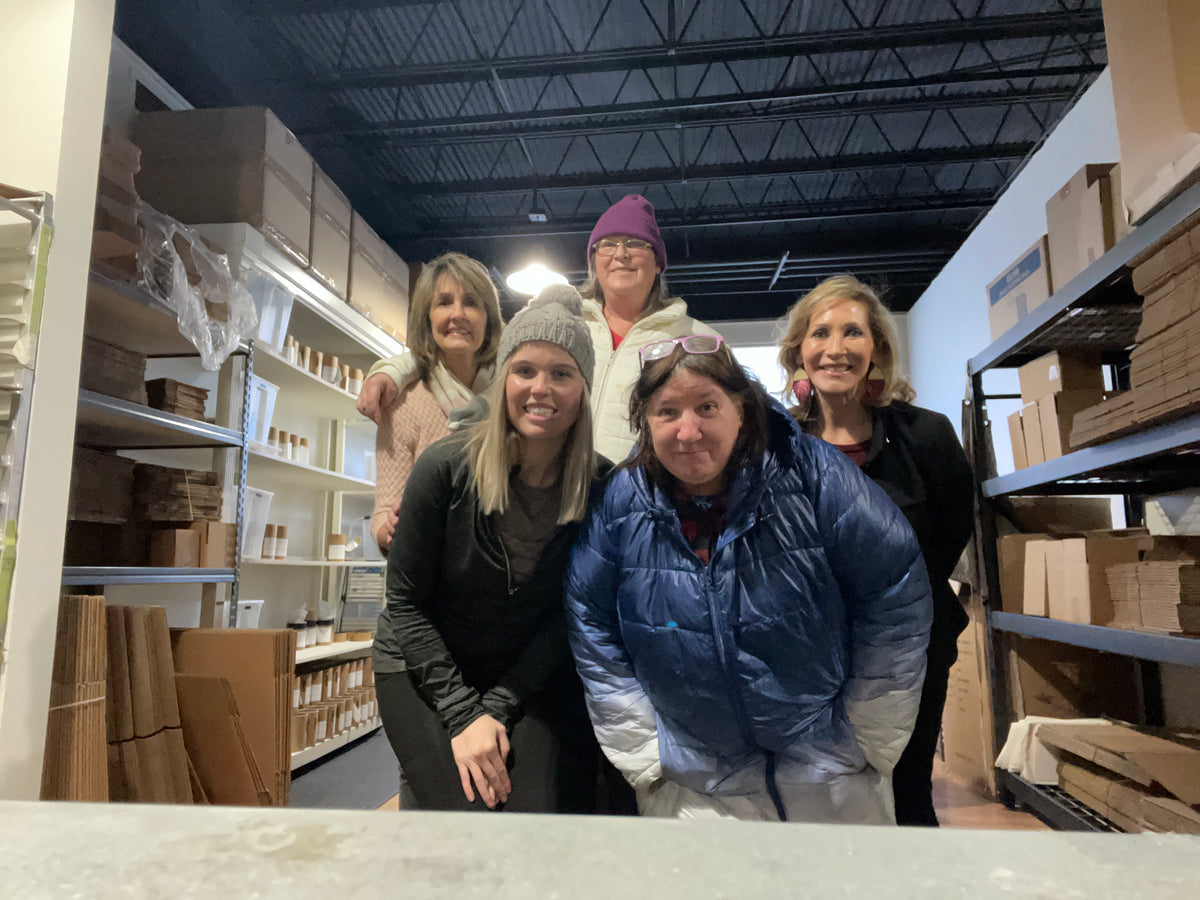Striving for the Light: Romona Jackson Illuminates the Path Toward Breaking the Cycle of Domestic Violence

“I know that if we can help one person to renew their lives, to reclaim the power necessary to manage their finances, their families, their faith, and their careers, it could really impact generations.”
For some, helping the vulnerable in society is a calling. For others, it’s the process of having overcome difficulties in their own past that drives them to become a light for those who are currently struggling.
For Romona Jackson, Esq., it’s a combination of both. “The Lord's plan is all I can really attribute it to,” she shared. “I have said before that there seems to be this thread that runs through my life of working with vulnerable people, and I think it's because I was a vulnerable person. I grew up in a family where there was lots of dysfunction and abuse. It did make me and my brothers vulnerable to all kinds of challenges as children, but also later in life as adults.”
She continued, “Seeing the impact of how that determined the trajectory of our lives is what has helped me to understand that many times people find themselves in situations because something has happened to them early on in life that put them on a specific path. I think understanding that has given me an ability to really empathize with people, to not judge, and to ask, ‘What is mine to do to help them through that situation?’”
Leaning on her faith and her familiarity with the challenges survivors face, Romona became a voice for the vulnerable. She’s been a legal representative and advocate for gender-based asylum applicants and women in family court and co-founded a human rights organization in Poland. Today, she is the founder and CEO of The Women’s Advocacy Center (TWAC), which is dedicated to supporting domestic violence survivors trying to get back on their feet.
RE + NEW + ALL had the privilege of speaking with Romona to spotlight Domestic Violence Awareness Month. We talked about what people need to understand about domestic violence, ways to improve how we talk about the issue publicly and begin breaking the cycle of abuse, and the remarkable program model The Women’s Advocacy Center uses to give survivors stability, hope, and a new beginning.
The Revealing Realities of Domestic Violence
In general discussions about domestic violence, a common theme tends to arise: Why doesn’t she just leave? And why does she keep going back? The questions assume there’s a simple answer, and that simply isn’t the case as Romona explains.
“Complex is a word that I use often,” she said. “You have these co-occurring instances of abuse: emotional, mental, financial, sometimes spiritual, and then physical. You have all of these things happening in a woman's life, and it's really difficult to sort out what's true, what's real, what is love, and to think about yourself apart from that person who has exerted so much power and control over you. It is a complex situation.”
Domestic violence can also overlap with other forms of victimization and exploitation, like trafficking. Most trafficking victims know their trafficker. A common way for women to become entangled in trafficking is through a romantic partner. And abuse is one way that partner maintains control over the woman being exploited.
“Many women who are in situations where they've been trafficked, they are coerced into that work and kept in that work by men, and sometimes women, who are physically violent towards them,” Romona said. “It is threats, it's intimidation, it is actual violence carried out against them. So there is that overlap between people who are trafficked and people who have been physically abused as a way to make them remain in that lifestyle.”
Add to all these layers of complexity the fact that many women are at a high risk of being killed when they decide to leave. They need to have a safety plan in place, and creating that plan can sometimes take a great deal of time.
“It's not so easy to just pick up and leave, particularly if you have no job and nowhere to go,” said Romona. “I ask people to put yourself in a position where if you were asked, with urgency, to pack all your things and leave, where would you go? How quickly? Could you do that? If you had to pack all of your things and leave and take your children? How would you take care of yourself if you had never worked? Those are obstacles women have to try to overcome if they are making the decision to leave.”
Plus, change is hard and has to happen on several levels when walking away from an abuser. A woman suddenly needs a new home, a way to earn a living, and to figure out how to care for her children. She’s adjusting to a whole new situation virtually overnight. It can be overwhelming.
And the truth is, some women hope to still save their relationship. There is a connection, a shared history between themselves and their partners, despite the abuse. This is one key dynamic of domestic violence Romona wishes more people made the effort to understand.
“Women don't stay because they're weak. They don’t stay because they’re stupid. They don’t stay because they just want him to take care of her,“ Romona said. “Women stay because what they want is to have the marriage or relationship they thought they were getting into at the beginning. They did love this person. In many cases, they still do love this person. They thought this person loved them. They want the marriage to remain intact; what they want is for the abuse to stop.”
Changing the Conversation to Break the Cycle of Abuse
Domestic violence happens in secrecy, burdening its victims with shame and a sense of helplessness. It can lead to specific types of behavior, such as children acting out aggressively having no other way to express their feelings or a woman explaining away her bruises and her partner’s behavior out of fear.
While Romona doesn’t see domestic violence ending, she does believe there are ways we all, as a community, can intervene and disrupt the cycle of abuse. One way to do this is through greater awareness, by becoming better able to recognize and respond to this type of trauma-related behavior.
“What I would like to see is a trauma-informed community,” she explained. “That means we have people in the community—first responders, law enforcement, people in the emergency room at hospitals, and people working in schools with children, who are going to be the first folks to lay eyes on and to touch families who might be in crisis—trained in those situations to ask the next question: What is happening? And what is it that we can do? When you have a trauma-informed community, people are less likely to judge. They are more likely to be willing to step in and try to help that victim.”
This awareness needs to be carried over into conversations we have with our families and friends as well. Rather than normalizing harmful behavior, Romona would like to see people normalize believing those who say they’re being abused. Paying attention and learning to ask helpful follow-up questions can break the cycle before it becomes even more destructive.
“I have talked with teens about this phrase that I hear, ‘Well, you know, girls are just like that. Guys are just like that,’” she said. “That same kind of idea gets translated to adulthood. ‘Oh, some men are just really possessive. They're just really jealous. They just want to know where you are all the time.’ No, let's not normalize those kinds of behaviors. Let's believe people when they say, ‘This is what's happening to me. I'm concerned.’”
“Studies show that there's probably only 2% of women who are making up stories of abuse, 98% are absolutely telling the truth,” she continued. “I tend not to worry about that 2%. I think it is more likely we are going to get women who are 100% telling us what they have been living through. And it's then our opportunity to help them to find a different path.”
Lastly, Romona shares that we need to shift our perspective around and ensure treatment for abusers. She’d like to see more intervention programs for batterers because that too has ramifications on their future relationships.
“Sometimes people don't like to talk about this part, but the abuser needs help as well,” she said. “If we only focus on the women and children and we don't also focus on the batterers, we don't help these men understand what they have been doing and how to change that behavior, then if the woman divorces him, he's likely to marry somebody else. Then there will be another family. But if there's some intervention in his life, it's possible that if he does marry somebody else, there will be a different story.”
“There's nothing redeeming about what they have done, but we also have to recognize that some of those folks perhaps have had things happen to them that have brought this behavior about. It's really important to try to understand what has happened to that individual and what, if anything, we can do to help them understand and process what's happened to them and begin to set some boundaries and realistic expectations for appropriate behavior.”
Creating a New Tomorrow for Domestic Violence Survivors
Finding shelter and safety when leaving an abusive relationship is only the beginning of the journey. Survivors often have very little in the way of money, food, and a place to go once they decide to leave. Successfully transitioning to a new life requires that a number of basic needs are met so they can focus on their physical, emotional, and psychological recovery.
“How do we really help people begin to have a different life, have healthy relationships so that we don't see them again in our program, so that they don't get back into situations that are unsafe and unhealthy for them?” Romona said. “And how do we make sure that their children are well taken care of so that 5, 10, 15 years from now, we don't see their children involved in unhealthy and unsafe relationships?”
With the creation of The Women’s Advocacy Center’s A.I.M. Program (Assist, Invest, and Mentor), Romona and her team seek to address those questions and give domestic violence survivors the tools and strategies needed to build a solid foundation around them and build the path to a brighter future.
The A.I.M. Program is 24 months of in-depth, ongoing, holistic support and engagement on multiple levels. Designed to provide stability as their clients get back on their feet, each participant works one-on-one with a mentor for at least a year.
The program offers assistance with meals, finding and even furnishing a new home, pro bono legal representation, transportation, and guidance for entering the job market and managing money. Their Donation Center carries baby, personal, and household care items free of charge to women in the program.
With those needs taken care of, the women gain a sense of safety and security. This enables them to begin a deeper journey of healing, of re-learning who she truly is as opposed to the hurtful words and negative messages she was given by her abuser. For this, TWAC provides counseling referrals and a bi-weely support group for this.
TWAC also recently incorporated a children’s program into their range of services, an addition everyone at the organization is very excited about. While helping mothers certainly benefits their children, the children themselves need assistance coming to terms with the trauma they’ve been exposed to. Research shows that without intervention, these kids are at higher risk of facing mental and emotional issues and substance abuse, among other challenges.
“What we have tried to do with our children's program is to be that positive intervening factor in those children's lives, and that looks different for each family,” Romona explained. “Some children are in counseling, some children are engaged in unique kinds of therapy, and then we have, for all the children of the moms that we serve, what we call our sports programs.” The goal is “to help them understand that there are other ways to live life, there are healthy and positive ways to interact with people, on teams and in groups.”
While TWAC does have a safehouse and can provide emergency shelter when needed, the main goal of their work is to empower women, giving them back a sense of control over their lives as well as a way to sustain it. Due to how extensive and intensive the program is, TWAC only works with 20 women at a time. And, it’s tailored to meet the desired outcome of each individual client.
“That's so important, that we are not prescriptive and saying, ‘This is how you should do it. You should leave and this is what should happen,’” Romona shared. “We work very closely with our clients and listen to what they are saying their goals and desires are. And then our job is to see how we can come alongside to help that become a reality.”
The Many Ways Everyone Can Make a Difference
Want to get a sense of just how many people are impacted by abuse? Romona recommends a simple exercise: First, consider that statistics say 1 out of 4 women will experience abuse at some point in their lives. Then, go anywhere there might be a large gathering of women and begin counting every 4th woman you see. If you went to the grocery store, how many different women might that end up being?
Domestic violence isn’t an easy topic to think about or discuss, but awareness is essential. Educating ourselves and one another is key to moving the conversation forward. Only through continued dialogue can we increase access to the resources needed to aid everyone affected by the issue. Keep learning, find out what resources or legislation your city has or lacks, attend lectures, and invite knowledgeable speakers like Romona to your organization.
If you’d like to do more, domestic violence organizations across the country could use dedicated volunteers. In fact, if you’d like to get involved with The Women’s Advocacy Center, there are a number of ways to do so:
- Help distribute furniture and other necessities from their Donation Center to their client’s new home.
- Be a mentor to one of their clients. Though it requires an intensive interview and training process, if you can commit for six months to a year, you’ll be a vital team member in one family’s recovery.
- Fundraising is another important area where TWAC, and other organizations, could use assistance, especially as so much of it is still being done online due to COVID.
- Join the TWAC Board of Directors and help set the course for them to grow and continue delivering on their mission.
Romona is quick to share her appreciation for everyone involved at The Women’s Advocacy Center. From staff to board members to volunteer partners in the community, she knows each person’s efforts play a critical role in the successful transformations that take place through their program. And she realizes those successes will have ripple effects well beyond the work they do.
“Sometimes that one lady before us with maybe two children, we think we are just helping her in the moment, and certainly we are, but those two children are being assisted as well,” she said. “And if we can help put that family back on the right path, then there is the possibility their future is going to be very different from what it would have been if they had not had any support, if they had not had people around them to say we care about what happens to you. Then not only their children but their children’s children are going to have a different life.”
“It can be dark at times,” Romona said. “But we're all really striving for the light. We’re striving to be the light, we're striving to shine the light, and we're striving to point women to the light.”



